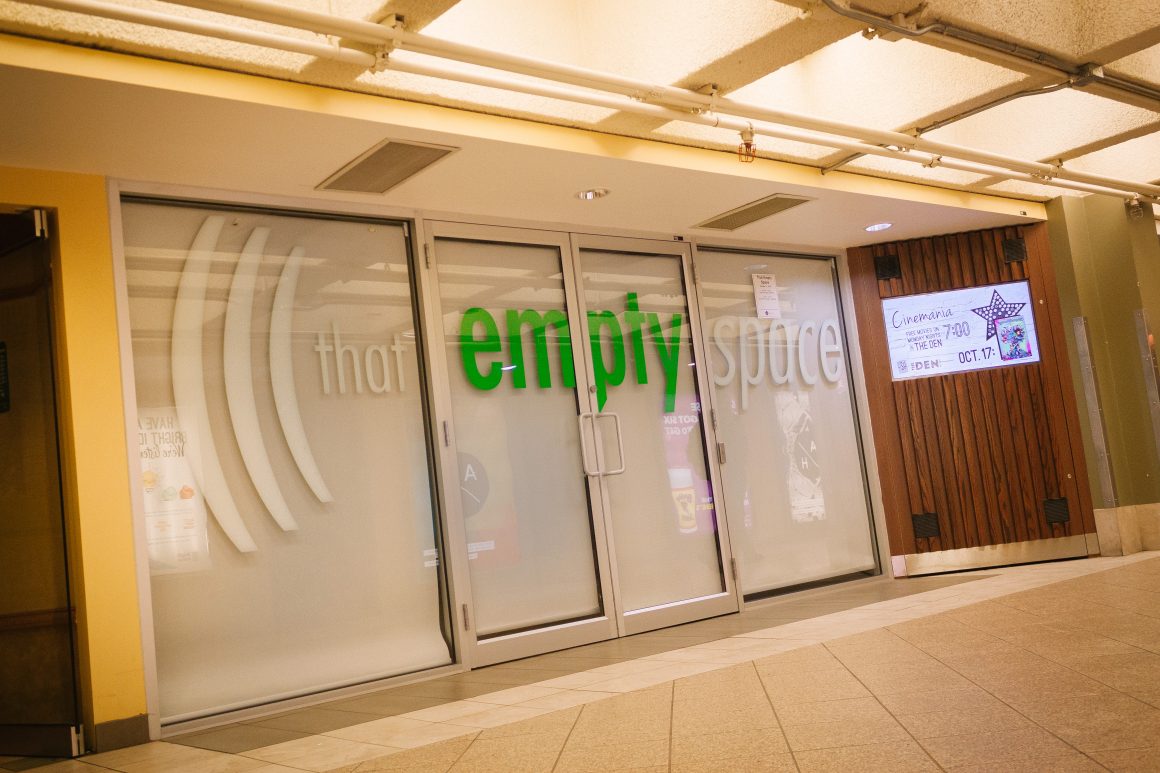
That Empty Space instructor talks yoga on a budget and mind-body connections
By Kent Wong, October 11 2016 —
Need some time to relax and take your mind off midterms? Maybe you have a lingering injury or just feel a bit tense. That Empty Space and the Students’ Union provide students with free fitness services — one of them is yoga.
Jessica Kwong is an instructor at That Empty Space on campus and also teaches at Yoga Mandala studio. She started at Yoga Mandala as an instructor after earning her Bachelor of Arts in contemporary dance from the University of Calgary. This week, the Gauntlet sat down with Kwong to learn about the health and wellness benefits of yoga.
The Gauntlet: How did you get into yoga?
Jessica Kwong: I was a student of dance from the time I was five-years old, but by 20, I wanted a break and was looking for a practice that would balance my training yet allow me to keep conditioned well enough to return to it. I enrolled in a registered hatha yoga class and my relationship with yoga grew from there. It encompassed times I wanted or needed a physical challenge, times I craved emotional solace [and] times I was ready to empower myself and break patterns in both realms. Eventually I started dancing again and got my BA in Contemporary Dance from the U of C.
G: What would you suggest to people who may have some interest in yoga but have no idea where to start?
K: Start safe, stay safe — a registered weekly class for beginners, an introductory workshop with an established teacher or one-on-one help. While there are good guides to home practice available at the news stand via magazines such as Yoga Journal, I would caution against thinking everything you find online is necessarily the right guidance for a beginner. Trends come and go — wisdom from previous generations may now prove counter-intuitive. Above all else, listen to your body and if you find a teacher you like in a community drop-in class, don’t be shy — ask questions! If they do not seem happy to oblige, they are in the wrong occupation and you should move on.
G: What do you think are the biggest benefits yoga can provide to busy students?
K: Checking in with yourself. I recently heard a discussion about the science that shows that all elite performers — pro athletes, esteemed doctors and lawyers — they all have one thing in common and that is demonstrably superior physiological awareness. The body informs the brain, as much or more than the reverse. So we would all benefit from listening to our body, making friends with it, nurturing and protecting it. Yoga provides the space for this.
G: Have you heard any success stories from your own students that could help inspire people on the fence about yoga?
K: One young guy from [That] Empty Space had a longtime shoulder injury and arguably poor posture. He couldn’t return to some of the sporting activities he had enjoyed before and wanted a little stress relief, if nothing else. When his schedule changed and he couldn’t keep coming to That Empty Space, he started coming to my classes at Yoga Mandala. The last one he attended before moving east to continue his education, he was able to do full wheel — a big backbend that requires a lot of strength, good kinesthetic awareness, openness through the heart and excellent range of motion in the shoulder girdle. I was so impressed.
G: If a new student is on a tight budget, what do you think they should prioritize?
K: Getting to class — no fancy outfits, no sweat towels. Most places offer student pricing, loaner mats and some sort of weekly pay-what-you-can karma class, often benefitting local charities or helping build experience for teacher trainees. If you do develop a home practice, a mat, perhaps a yoga strap and -— if you go up the line — a pair of wood, cork or heavy foam blocks.
G: If you could convince U of C students and faculty to do one or two poses a day for the rest of their lives, what would they be? What do these poses do for us?
K: I’m going to say a modified forward fold against a wall and savasana — aka lying on the floor. In the first, I’m suggesting one should face a wall, put their hands somewhere between chest and bellybutton height at a width about shoulder distance, and then walk backwards, folding at the crease of the hip until your arms are about straight, your back long, and your feet hip distance under the like of hips, like an inverted L. Here you can stretch the legs, outer hips, open the joints, drop the spine into the body and open the chest and shoulders.
G: Anything you’d like to say to potential students, or existing ones at the empty space?
K: You can do this. We can help you. For those already in the know who have come faithfully and dragged your friends, thank you and keep up the amazing work!
